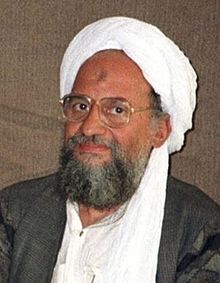Sayid Qutb served as an inspiration for many young Egyptian Islamists to the extent that various jihadist groups formed and claimed to be the vanguard he promoted. Ayman El Zawahiri in particular, formed Egyptian Islamic Jihad with the aim of toppling the Egyptian government through a military coup. Zawahiri’s political vision, perception of the West, and jihad were completely inspired by Qutb’s ideas of hakimiyah and jahiliya, as he praised Qutb for helping the Islamist movement define its enemies at home and abroad.

However, Zawahiri did undergo an ideological shift in the 1980s, enabling him to focus on international jihad as opposed to local operations. Zawahiri identified two enemies of Islam: the “near enemy” and the “far enemy.” He defined the near enemy to be governments ruling over Muslim majority countries by using Western institutions and cultural norms. These governments are unable to rule under the requirements of shariah and are perceived to accommodate the interests of their Western allies, not their own people. He defined the far enemy to be governments of non-Muslim populations benefiting from the domination of the current world order, more specifically, the US and Israel.
Before forming an alliance with Osama Bin Laden, Zawahiri focused on confronting the near enemy, which was the Egyptian government. But he froze all of his operations in Egypt as a result of his group’s consistent failures, financial issues, internal divisions, and most importantly, an alliance with Osama Bin Laden. This alliance changed Zawahiri’s philosophy from combating the near enemy to confronting the far enemy, as he focused on the liberation of Palestine and urging Muslims to launch armed operations against the US and Israel. It was this ideological shift that truly turned the concept of jihad global.
Overall, Zawahiri’s radical ideology has significant parallels to Sayid Qutb’s ideas. The extreme hostility towards the West, the emphasis on establishing an Islamic state, and the overthrow of governments through jihad are evident in Qutb’s works, illustrating his deep impact on Zawahiri. Often referred to as the “brain” behind Al-Qaeda, Zawahri criticized the Muslim Brotherhood for not being confrontational enough and took Qutb’s conception of jihad to the international level by declaring war on Washington. In May 2011, Zawahri became the leader of Al-Qaeda after Bin Laden’s death.
With Zawahri’s ideological framework in place, Al-Qaeda in Iraq grew stronger. With the increase in sectarian strife and civil war in the aftermath of the US invasion of Iraq in 2003, ISIS had a safe haven to establish itself and flourish. In terms of ideology, it is clear that ISIS and Al-Qaeda share the same philosophy, goals, and perception of Islamic state. However, they definitely differ regarding the means of achieving these goals and overall group structure, leadership, and operations. The various differences between the two jihadist groups will be examined in part four of this series.




